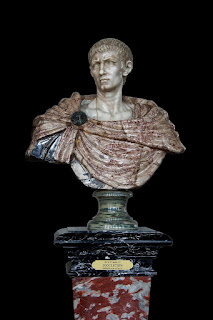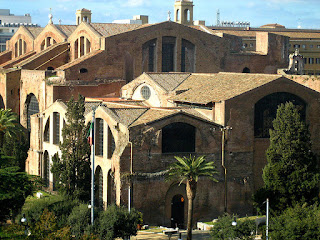Antonio Visentini – architect and engraver
His copies took Canaletto paintings to wider world
Antonio Visentini, whose engravings from Canaletto’s paintings helped the Venetian artist achieve popularity and earn commissions outside Italy, particularly in England, was born on this day in 1688 in Venice. A pupil of the Baroque painter Giovanni Antonio Pellegrini, Visentini was commissioned by Canaletto’s agent, Joseph Smith, who was the British Consul in Venice, to produce engravings of Canaletto’s celebrated views of the city to be published as a catalogue. Engraving itself was an intricate skill and in the days before photography anyone who could produce faithful copies of paintings or original art that could be printed on paper was much in demand. Visentini embarked on his first series of 12 Canaletto views, mainly of canal scenes, in around 1726 and they were published in 1735. This was followed by two more series of engravings of Canaletto works arranged by Smith, which were published in 1742. In all, Visentini copied some 38 Canaletto views, which not only furthered Canaletto’s career but his own. Smith encouraged Canaletto to travel to England to paint views of London. Read more…
_________________________________________________________________
Festival of Madonna della Salute
Venetians celebrate their deliverance from the plague
Venice has held a festival on this day every year since 1681 to give thanks to Santa Maria della Salute for delivering the city from the plague. A terrible epidemic hit Venice in 1630 during the war against Austria and in just 15 months 46,000 people died from the disease. The epidemic was so bad that all the gondolas were painted black as a sign of mourning and they have remained like that ever since. The Doge had called for people to pray to the Madonna to release the city from the grip of the plague and had vowed to dedicate a church to her if their prayers were answered. When the plague ceased, in order to thank the Virgin Mary, the Senate commissioned Baldassare Longhena to design Santa Maria della Salute, a splendid baroque church on Punta della Dogana, a narrow finger of land between the Grand Canal and the Giudecca Canal. Construction of the magnificent church began in 1631 and took 50 years to complete. On the occasion of the inauguration in 1681, a bridge of galleys and ships was formed across the Grand Canal to allow a mass procession of the faithful to the Church. Read more…
__________________________________________________________________
Pope Benedict XV
Humanitarian pope who tried to stop the war
Pope Benedict XV, who was pontiff for the whole of the First World War, was born on this day in 1854 in Genoa. He tried to stop the war, which he described as ‘the suicide of a civilised Europe’, but when his attempts failed, he devoted himself to trying to alleviate the suffering. Christened Giacomo Paolo Giovanni Battista della Chiesa, the future Pope Benedict XV was encouraged to study law by his family and attended the University of Genoa. Afterwards his father reluctantly agreed to let him study for the priesthood and he was allowed to move to Rome. Pope Pius X made him Archbishop of Bologna in 1907 and a Cardinal in 1914. He became Pope Benedict (Benedetto) XV in September 1914 after World War One was already under way. The new Pope immediately tried to mediate to achieve a peaceful settlement but his attempts were rejected by all the parties involved. He then concentrated on humanitarian works, such as the exchange of wounded prisoners of war and the distribution of food among starving people. Although Benedict had been chosen at the age of 59 because the church was looking for a long-lasting Pope, he died in Rome in 1922. Read more…
_________________________________________________________________
Giorgio Amendola - politician and partisan
Anti-Mussolini activist who sought to moderate Italian Communism
The politician Giorgio Amendola, who opposed extremism on the right and left in Italy, was born on this day in 1907 in Rome. Amendola was arrested for plotting against the Fascist regime of Benito Mussolini in the 1930s, fought with the Italian resistance in the Second World War and later worked to move the Italian Communist Party (PCI) away from the doctrines of Soviet Communism and Leninism towards a more moderate position acceptable in the mainstream of Italian politics. Amendola was almost born to be a political thinker. His mother, Eva Kuhn, was an intellectual from Lithuania, his father Giovanni a liberal anti-Fascist who was a minister in the last democratically elected Italian government before Mussolini. It was as a reaction to his father’s death in 1926, following injuries inflicted on him by Fascist thugs who tracked him down in France on Mussolini’s orders, that Amendola secretly joined the PCI and began to work for the downfall of the dictator. He was largely based in France and Germany but from time to time returned to Italy undercover in order to meet other left-wing figures. It was on one visit in 1932 that he was arrested in Milan. Read more…
Home































